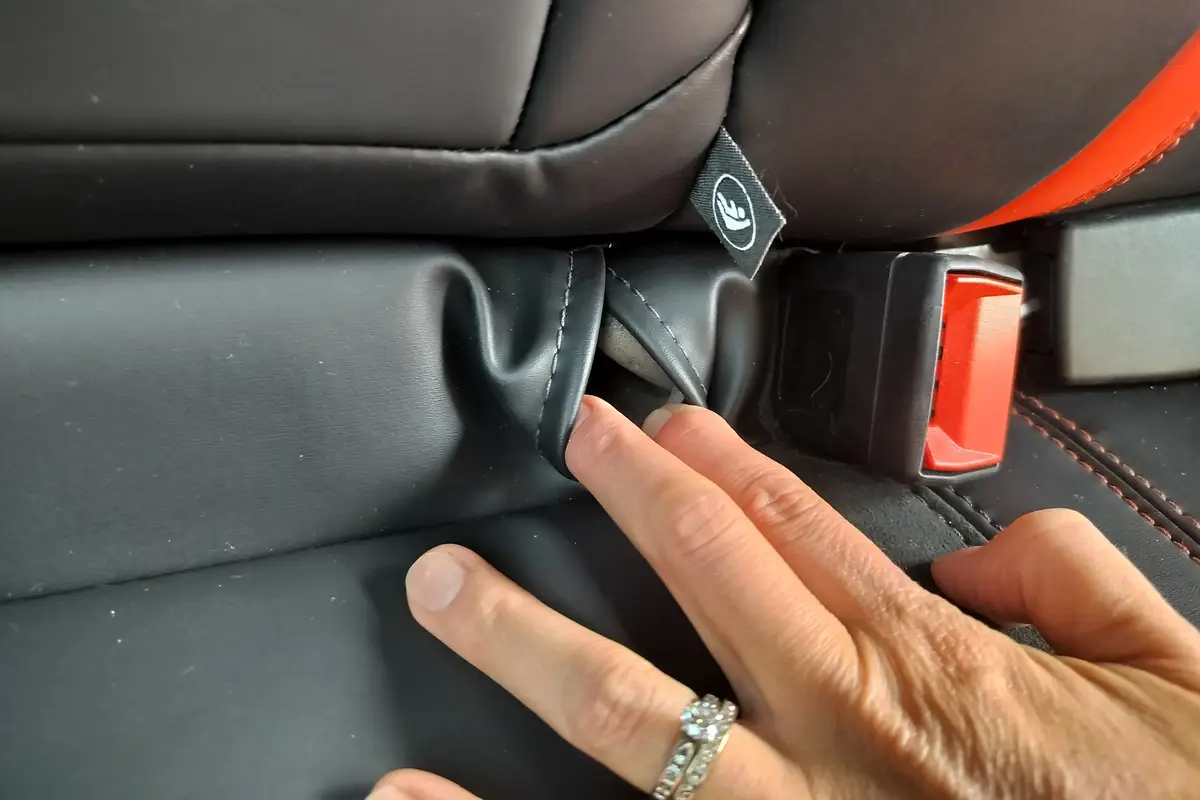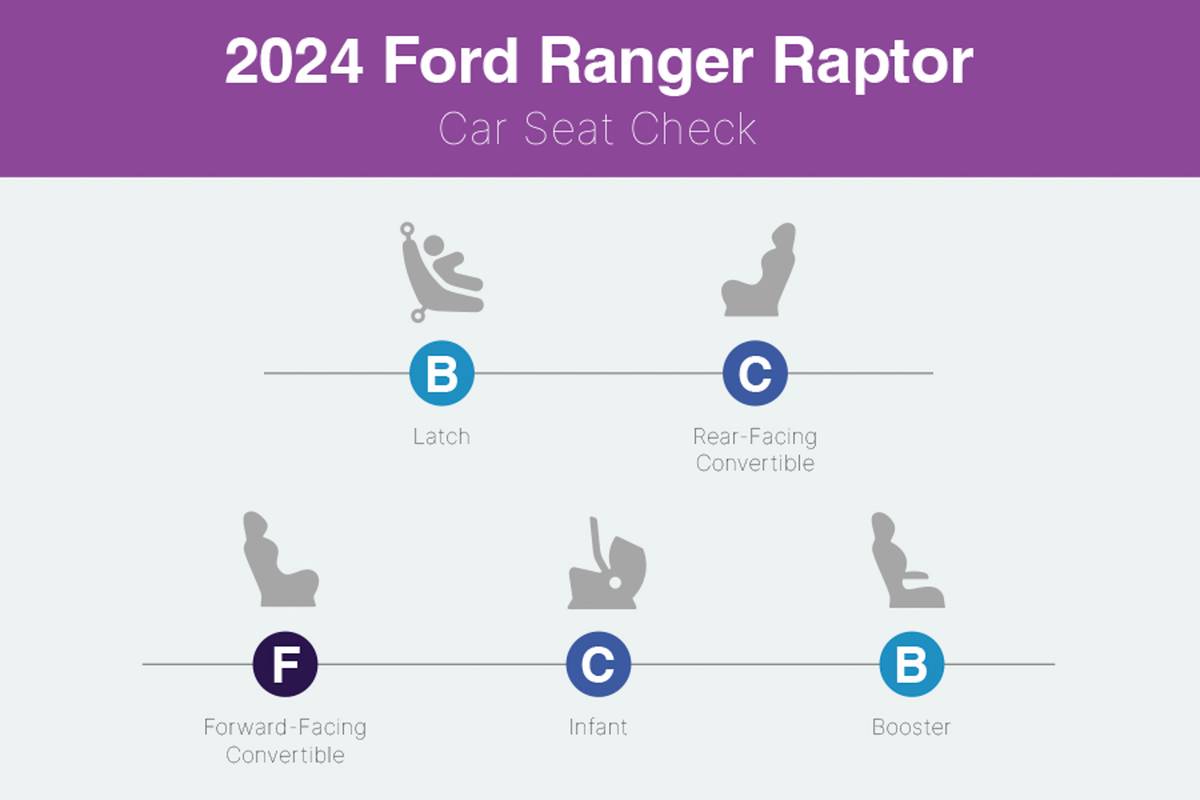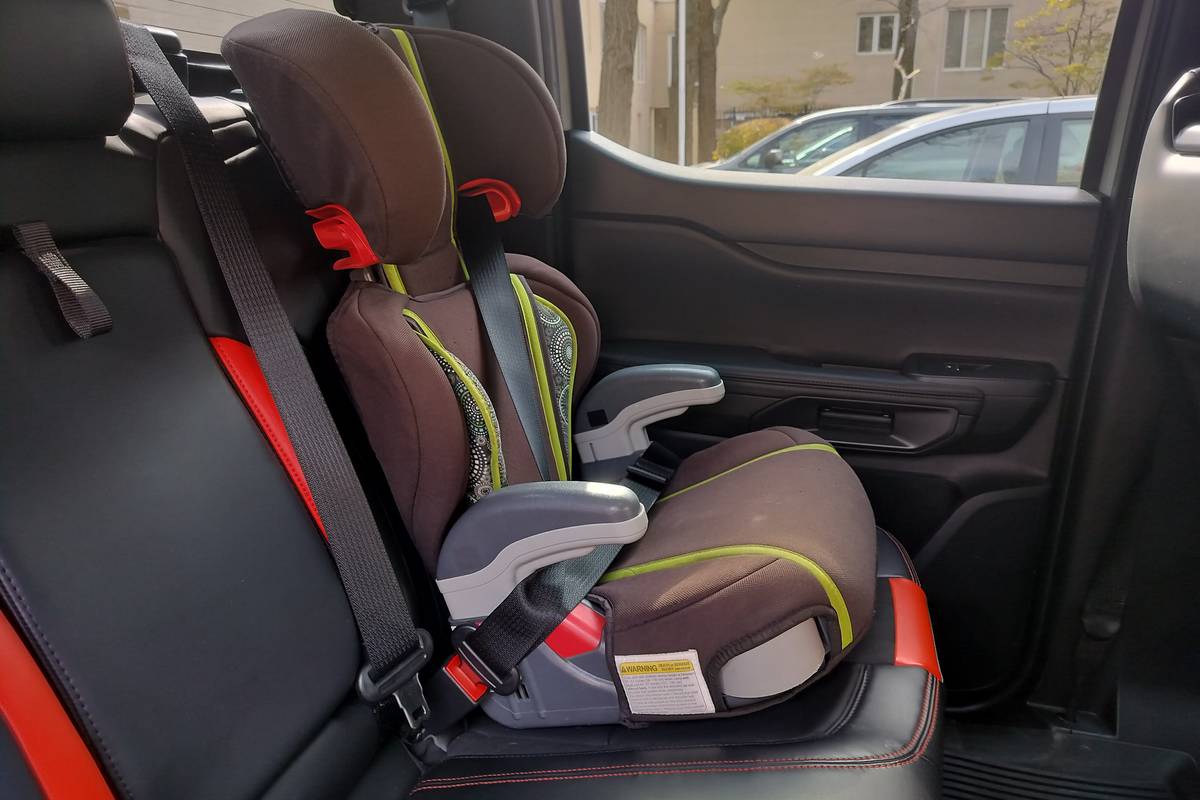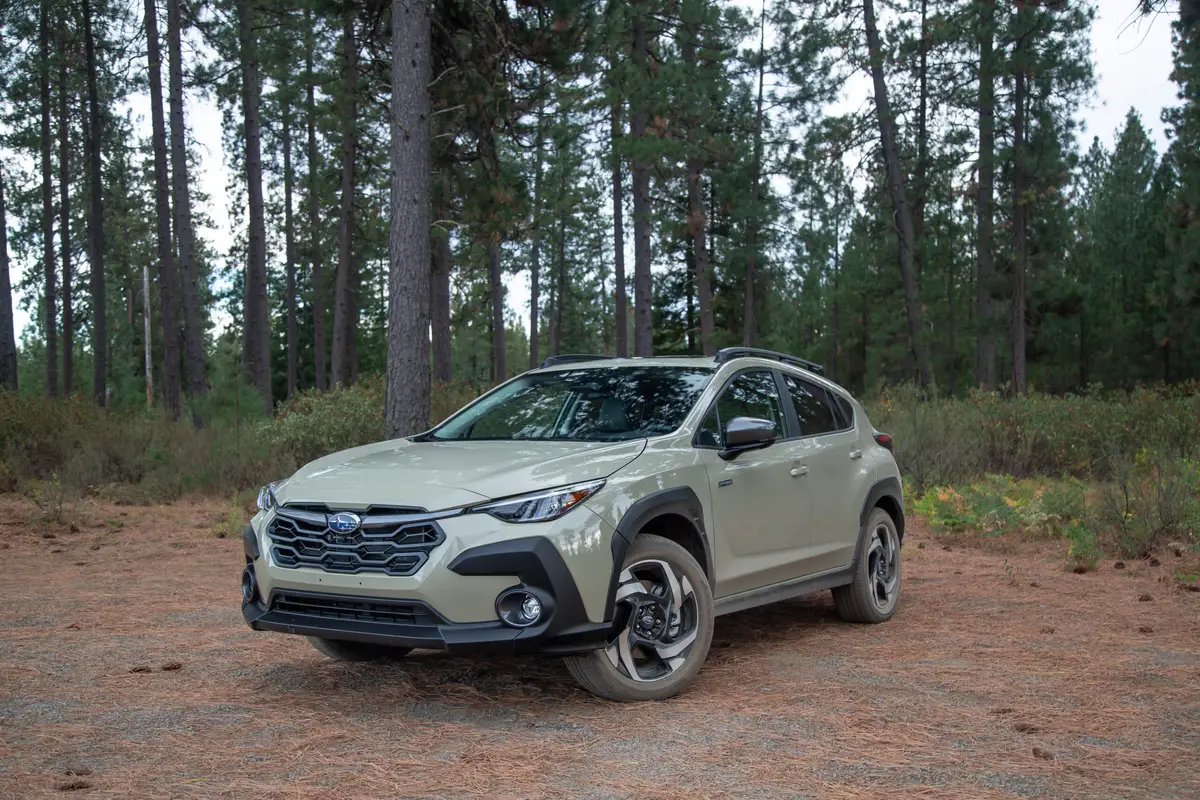How Do Car Seats Fit in a 2024 Ford Ranger Raptor?


The verdict: Ford’s mid-size Ranger pickup truck comes a couple of different ways. For this Car Seat Check, we tested the Raptor version – the lineup’s aggressive, off-road-oriented trim. It didn’t fare well in our tests due to a lack of rear legroom among other factors; in fact, the forward-facing convertible failed.
Does it fit three car seats? No.
Take a look at how the Latch system and each car seat scored below in our Car Seat Check of the 2024 Ford Ranger Raptor.
Related: Search Car Seat Checks

Latch: Grade B
The two sets of lower anchors sit under slits in upholstery. They’re not too difficult to access once you pull the fabric to expose the anchors, but this is an extra step. The three top tether anchors are located behind the seatback and are very difficult to access.
Infant Seat: Grade C
The Latch anchor’s placement under the slits in the upholstery is an added complication for lower anchor connection, especially when using the infant seat’s chunky Latch connectors. It took a couple of tries to make contact with the actual anchor because it’s also deeply set. Legroom was an issue with this car seat. We moved the front passenger seat up to accommodate our 5-foot-6-inch passenger; she had OK legroom, but taller passengers will need more to be comfortable.
Rear-Facing Convertible: Grade C
This seat was slightly easier to install via the lower anchors due to the convertible’s skinnier, hooklike Latch connectors, but it still wasn’t great. As with the infant seat, we also had front passenger legroom issues with the convertible in rear mode.

Forward-Facing Convertible: Grade F
We removed the head restraint to situate the convertible flush against the seatback, but that’s about all that went well with this installation. We struggled a bit to connect to the lower anchors and could not connect to the top tether anchor. To access the top tether anchors, the seatback must be folded to expose them, which is inconvenient and awkward to do. Once we connected to the top anchor, we were unable to lock the seat back in place because our car seat’s tether strap tightener is chunky (see photo) and prevented the seatback from latching, making it unsafe. A different type of car seat might have a skinnier strap tightener, however.
Booster: Grade B
After removing the head restraint, the booster fit nicely flush against the seatback. The Raptor’s floppy buckles could be difficult for kids to grasp and use independently, however.

Grading Scale
A: Plenty of room for the car seat and the child; doesn’t impact driver or front-passenger legroom. Easy to find and connect to Latch and tether anchors. No fit issues involving head restraint or seat contouring. Easy access to the third row.
B: One room, fit or connection issue. Some problems accessing the third row when available.
C: Marginal room plus one fit or connection issue. Difficult to access the third row when available.
D: Insufficient room, plus multiple fit or connection issues.
F: Does not fit or is unsafe.
About Cars.com’s Car Seat Checks
Editors Jennifer Geiger and Jennifer Newman are certified child safety seat installation technicians.
For the Car Seat Check, we use a Chicco KeyFit 30 infant-safety seat, a Graco Contender 65 convertible seat and Graco TurboBooster seat. The front seats are adjusted for a 6-foot driver and a shorter passenger. The three child seats are installed in the second row. The booster seat sits behind the driver’s seat, and the infant and convertible seats are installed behind the front passenger seat.
We also install the forward-facing convertible in the second row’s middle seat with the booster and infant seat in the outboard seats to see if three car seats will fit; a child sitting in the booster seat must be able to reach the seat belt buckle. If there’s a third row, we install the booster seat and a forward-facing convertible. Learn more about how we conduct our Car Seat Checks.
Parents should also remember that they can use the Latch system or a seat belt to install a car seat, and that Latch anchors have a weight limit of 65 pounds, including the weight of the child and the weight of the seat itself.
Cars.com’s Editorial department is your source for automotive news and reviews. In line with Cars.com’s long-standing ethics policy, editors and reviewers don’t accept gifts or free trips from automakers. The Editorial department is independent of Cars.com’s advertising, sales and sponsored content departments.

News Editor Jennifer Geiger joined the automotive industry in 2003, much to the delight of her Corvette-obsessed dad. Jennifer is an expert reviewer, certified car-seat technician and mom of three. She wears a lot of hats — many of them while driving a minivan.
Featured stories





